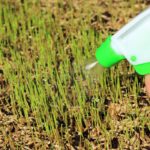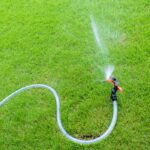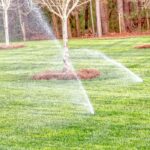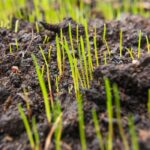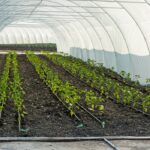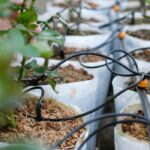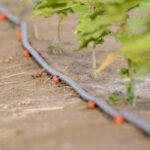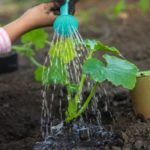Drip irrigation is an easy means of maintaining the health of your grass and gardens. Though a fairly high-tech solution, installing a drip irrigation system saves you time and effort, and it supplies water to your plants thoroughly and efficiently.
Drip irrigation uses tubes that are laid under or on top of the ground to provide low pressure water to plants, and there’s no reason they can’t be used to water grass as well. While the normal drip emitters may lead to water channeling in the soil, drip-spray attachments can spread out water more (but require a bit more planning).
With this method of irrigation, you avoid overwatering your grass (as long as you remember to turn it off lol), while allow the drip system to water your plants consistently, and slowly enough that they can absorb the water well. Drip irrigation is also more precise than other systems, as it applies water directly near the roots. Let’s take a look at what makes drip irrigation so effective.
Is Drip Irrigation Effective for Watering Your Lawn?
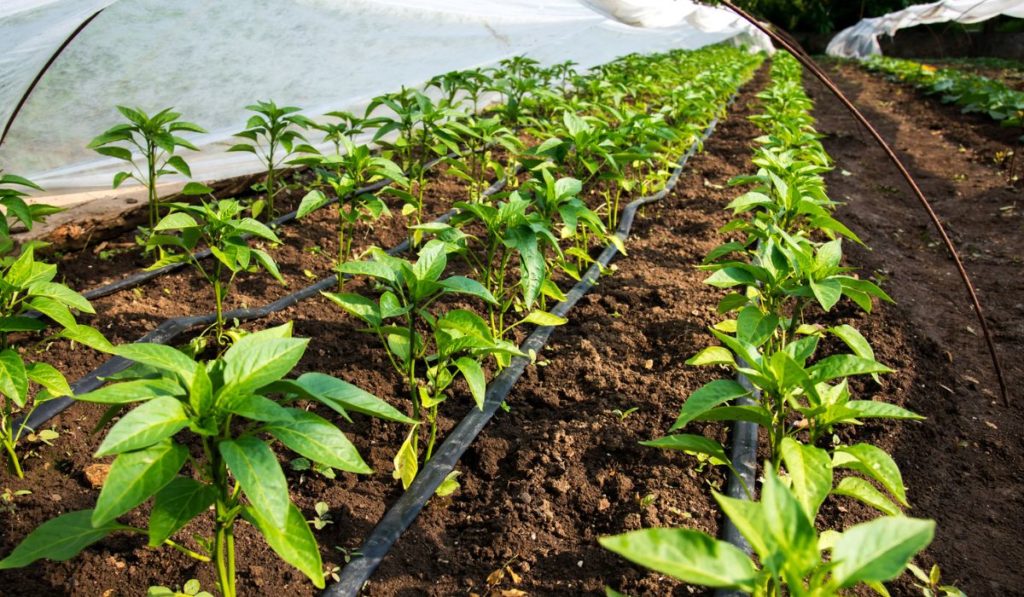
Drip irrigation is more efficient than sprinkler systems, which offer an efficiency rating of only 65 to 75%. In a drip irrigation system, however, the water is applied at a slower rate and moves at lower pressure to the root zone of the plant. The water emitters are connected to hoses, which draw water from the home system.
This method also does not water soil between plants, which both reduces water usage and discourages the growth of weeds.
Most plants prefer soil that isn’t too soggy or too dry. Adding too much water to plants can drown them, but when they’re underwatered, they become brown and brittle. Ensuring the perfect balance can be difficult as you have to keep up with what and when to water, which is especially taxing with a busy schedule.
With drip irrigation, you can solve all these dilemmas, even in a climate with plenty of precipitation. This method not only supplies the ideal amount of water for the plants to flourish, but it also directs water to the roots, where it’s needed the most. This means water is kept off the leaves, which helps to stave off fungal diseases (though this is a really small bonus).
With an efficiency rating closer to 90%, drip irrigation is a no-brainer. Your garden will thrive, you’ll notice fewer weeds, and you’ll eliminate wasteful runoff, all with little maintenance once you set up the system.
You can automate drip irrigation, so you no longer need to remember to switch the system on. Through an automated system, you can schedule the drips in the early mornings for a while. A simple system based off a hose timer, drip irrigation kit, and length of hose (all on Amazon) may be all yo need to totally automate a string of outdoor plants, or cover a moderately sized yard.
Especially if you use sprayers instead of drip emitters (on Amazon) to cover a larger area (though not too large, you can probably only fit 4-5 of these on a line before starting to lose pressure).
Drip Irrigation vs Sprinklers
Sprinklers and drip irrigation are the two most popular irrigation methods. Each of these options is suitable for different scenarios. If you’re wondering how drip irrigation compares with sprinkler systems, there are various pros and cons to consider.
Sprinkler systems using simple oscillating sprinklers (on Amazon) work best at watering flat areas on your property, especially large patches. You can install a built-in sprinkler system with water lines that run underground. For people with a large property, sprinkler systems might seem like the best option.
However, the convenience of sprinklers comes with a price. While a sprinkler system will irrigate a large space quickly, it wastes water, which is counterintuitive. Also, because the water comes in contact with the leaves, it can lead to infections that damage the plants.
Why is Drip Irrigation More Efficient?
Because most of the water sits on the leaves, it ends up evaporating, which means that you’re losing 80% of the water used to irrigate your garden. Losing this amount of water will cost a lot, especially in a city where water shortage is something to worry about. Besides, using a sprinkler increases the risk of invasive weeds. Some of the water lands on the soil between the plants, which allows weeds to pop up.
In contrast, drip irrigation allows you to focus on a particular plant. The pipes are laid around the soil and provide water to the soil directly. Sometimes they are even buried underneath the soil. This means no water waste and you can avoid runoff issues. Like sprinklers, drip irrigation is ideal in certain circumstances. It comes with several benefits that make this a better option than sprinklers.
First, drip irrigation saves water. Water is only delivered to the plant that needs it. Instead of randomly applying water like a sprinkler, the drip system channels water only where it’s needed.
Also, the drip system waters the garden slowly, allowing the soil time to soak the water in. This results in less runoff and deeper waterings. Compared to a sprinkler, a drip system uses up to half the water. With this option, you also don’t need to worry about irrigation.
Because the water goes to the specific plant, drip irrigation reduces the growth of invasive weeds. It keeps the soil surrounding the plant dry, preventing the growth of weeds between plants. Also, avoiding applying water to the leaves means your garden will be protected from certain diseases.
How to Water Your Grass with Drip Irrigation
You can get started with a drip irrigation system in simple steps. Here are the components you need to water your grass:
- Valve:
Valve controls regulate the flow of water. To pre-program watering times, you can equip the valve with an automatic timer. - Filter:
On a drip system, filters prevent clogging from debris. - Pressure Regulator:
The pressure from the typical home water supply system is too high to use on a drip irrigation setup. A regulator decreases this water pressure and provides low-pressure flow even when the water pressure in your home fluctuates. - Backflow Preventer:
Backflow preventers keep water in the irrigation system from being sucked back into your home water supply. - Dripline:
Drip tubing moves water from the valve to the plants. The dripline connects to the regulator through an adapter. - Emitters:
Also called drippers, emitters are plastic devices that discharge water into the soil. - End Cap:
The end cap prevents water from seeping out of the end of the drip line. You can remove the end cap every few months to flush out sediment.
How Long Should You Leave a Drip Irrigation System Running?
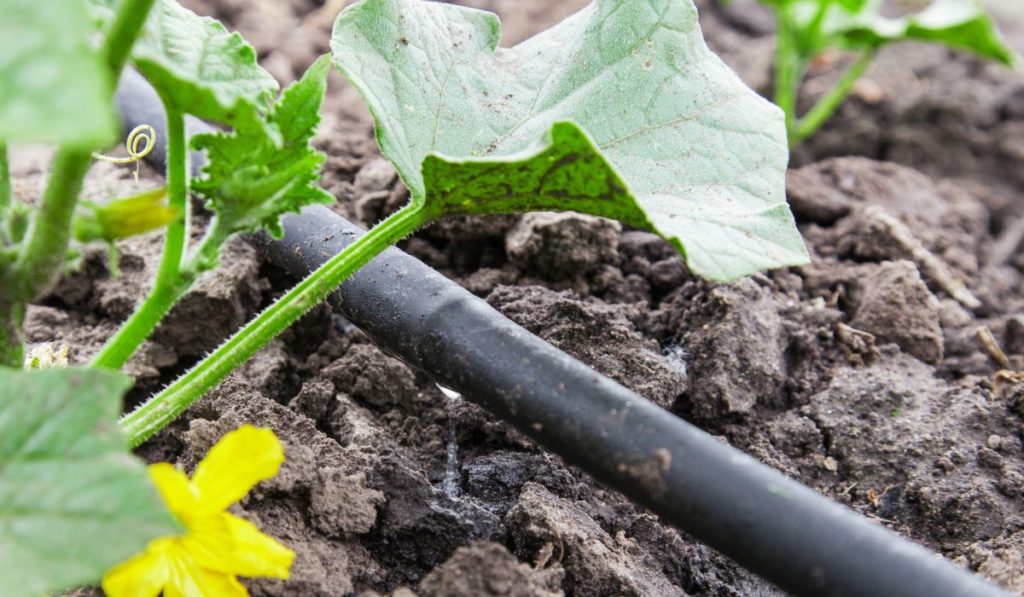
When you install it, a drip irrigation system should offer flexibility to change the location and number of emitters in your landscape. Each emitter can usually give you a 30-minute run time. For the best results, you can run the drip system for 30 minutes twice a week. You can experiment with different times and frequencies to find the magic number.
Conclusion
A good irrigation system is ideal to keep your lawn looking excellent, and drip irrigation is one of the best solutions. It’s water efficient and helps prevent the growth of weeds. Also, it does not expose the plants to diseases, as water only goes to the soil near the roots.

